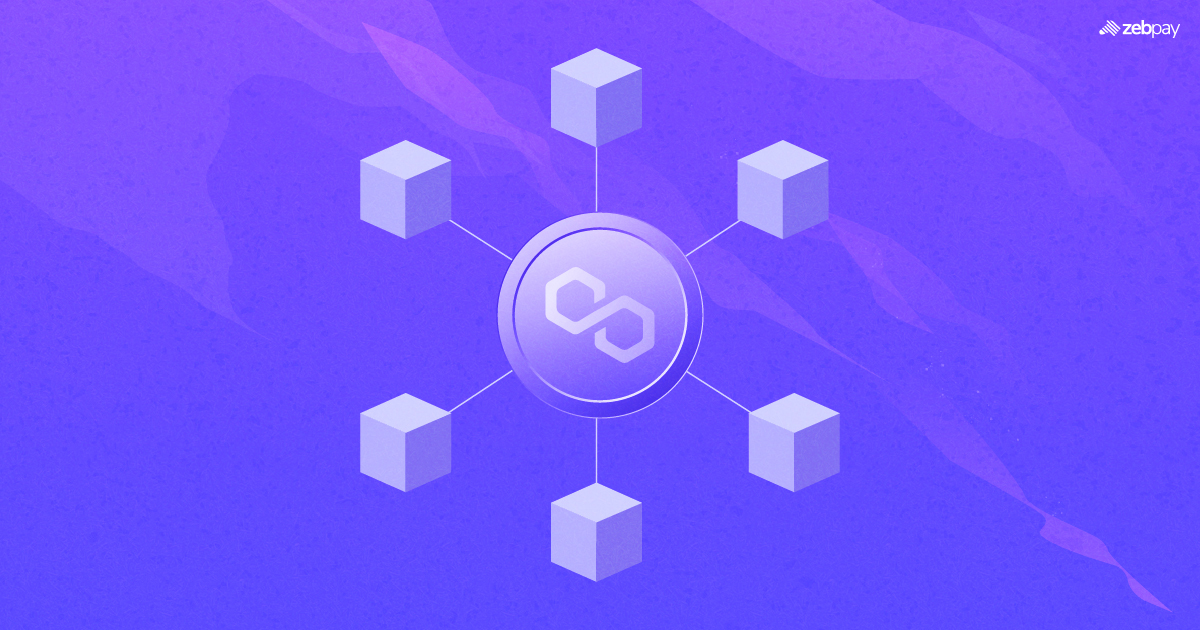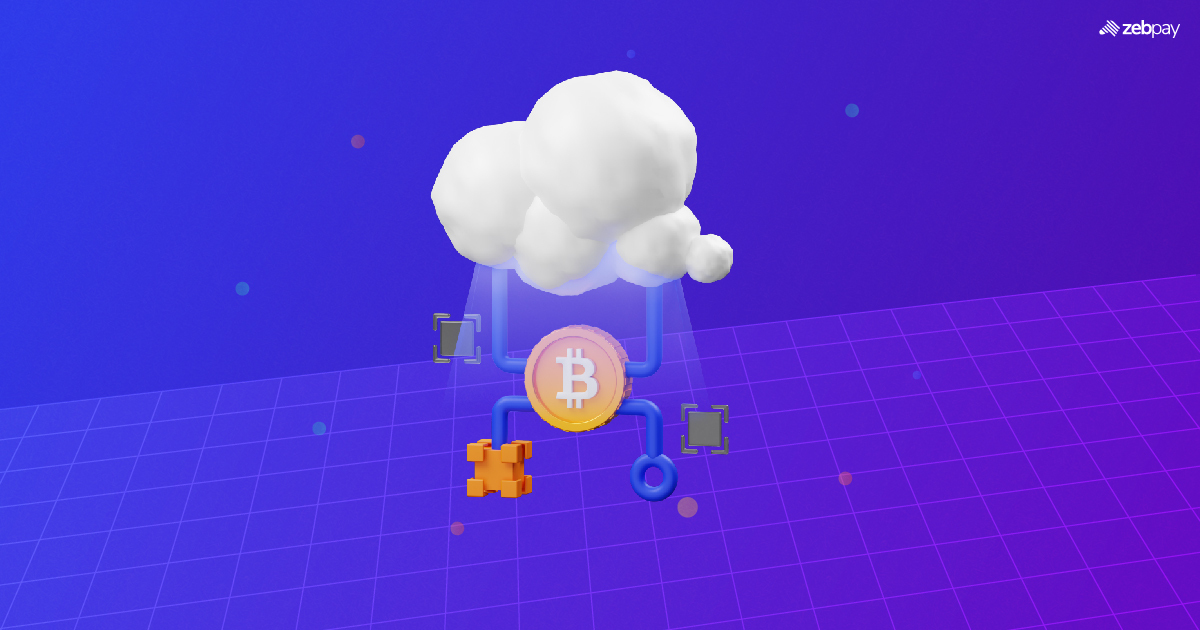Polygon is a layer-2 scaling solution formerly known as the Matic network. It works as an add-on layer to the base Ethereum blockchain but does not alter it. It aims to enhance Ethereum capabilities in terms of efficiency, scale, and security to encourage developers to create exciting products and applications. Some of its vital attributes include:
- High throughput: Polygon can achieve transaction speeds of 7,000 transactions per second (TPS).
- Availability: It employs sidechains to make crypto transactions low-cost, quick, and secure.
- Sidechains: It uses side chains to process transactions to reduce the load on the base blockchain.
- Security: It is a highly secure blockchain protocol and employs the proof-of-stake consensus mechanism.
Polygon has gained significant traction recently due to its interoperability and scalability solutions. It provides extensive tools for developers to design innovative and highly scalable protocols and dApps that can disrupt many sectors, including decentralized finance (DeFi).
Read more: What is Polygon (MATIC)
The Significance of Polygon in DeFi
The Polygon network provides many benefits to the decentralized finance sector. It improves scalability by increasing transaction throughput, lowering transaction fees, and accelerating confirmation times. Improved scalability enables more users to participate in the DeFi ecosystem, which is vital for broader adoption.
Polygon also improves interoperability within the DeFi ecosystem. It enables the easy transfer of crypto assets and data across different blockchains, helping developers leverage the best features of multiple blockchains. Enhanced interoperability fosters collaboration and innovation as developers can create products on existing protocols and access a wide range of crypto assets. It supports DeFi developers and users to unlock new DeFi use cases.
Liquidity Pools and Automated Market Makers (AMMs) on Polygon
Liquidity pools are Smart contracts that lock up crypto tokens to provide liquidity to facilitate crypto trading. Decentralized exchanges (DEXs) greatly rely on liquidity due to regular transactions. DEXs must be connected to liquidity pools to maintain a functional network without delays.
Automated market makers (AMMs) are a type of DEX that use algorithms to facilitate crypto trading. Crypto traders can directly trade cryptos using AMMs instead of traditional order books. There are other types of DEXs, but AMM-based DEXs have gained significant traction as they provide liquidity for a wide range of crypto tokens. AMM uses liquidity pools to facilitate decentralized trading, and the users who deposit their crypto tokens in them are known as liquidity providers (LPs). AMMs with insufficient liquidity pools can lead to impermanent losses and capital inefficiency. QuickSwap is an AMM fork of Uniswap on the polygon network, but it is faster than Uniswap. It leverages Polygon’s low costs and faster speeds for its smooth functioning.
AMMs incentivize LPs to deposit their crypto tokens with a fraction of network fees. The process of depositing crypto assets to earn rewards is called yield farming.
Yield Farming and Staking Opportunities on Polygon
Yield farming involves staking or lending crypto tokens to receive crypto rewards. It has risen in popularity recently due to innovations like liquidity mining. Polygon has emerged as a top alternative for Ethereum DeFi protocols as they experience high network congestion and gas fees on Ethereum. It also offers numerous benefits for the DeFi ecosystem, such as low fees, higher yields, and instant finality of transactions. It has allocated about 12% of its total supply for staking rewards. They were allocated to stimulate the network’s operation with the goal that transaction fees would sustain it in the long run. It also allocates a fixed amount of reward to validators and is distributed proportionally to all takers within a validator. Users can earn up to 20% interest or even more on various yield farming and staking protocols on Polygon.
Cross-Chain Asset Transfers and Wrapping on Polygon

The DeFi space is fragmented due to different protocols operating independently, making it hard for users to transfer assets across multiple DeFi protocols. Interoperability between DeFi protocols is essential for its broader adoption. The Polygon bridge enables cross-chain functionality; users can seamlessly transfer assets between crypto networks. This feature is vital for DeFi applications, as they can get liquidity from different networks. Before blockchain bridges, enterprises had to deploy the same application over multiple blockchains. It provides a united interface for developers to connect with various chains and transfer crypto assets. It creates a flexible and smooth solution for enterprises by providing a framework to manage and view their data on multiple chains in a unified interface. It offers many benefits to DeFi protocols, including fast and cheap transactions, improved security, and cross-chain liquidity.
DeFi Innovations and Protocols on Polygon
Decentralized finance protocols have risen in popularity as they eliminate intermediaries, increase transparency, and, most importantly, provide financial services to the unbanked. The Polygon network stands out amongst other emerging protocols as it immensely improves the interoperability, scalability, and security of Ethereum. It is an efficient network that fosters innovation to develop dApps such as DEXs. New dApps on Polygon also benefit from Ethereum features as it remains part of its ecosystem.
QuickSwap is an AMM fork of Uniswap and makes most of the faster speeds and low costs provided by Polygon. Its users can swap crypto tokens using AMM. It operates as a DeFi liquidity protocol, where you can deposit tokens into the liquidity pools to earn a portion of the transaction fees from those who use them. Users can seamlessly trade any ERC-20 token without using a traditional order book.
Like Quickswap, Sushiswap is a fork of Uniswap; its governance token is Sushi. Sushi holders have governance rights and can earn a part of the platform fees. It is a decentralized exchange that helps users swap their Sushi tokens with other crypto tokens.
Aave is another popular decentralized lending protocol that can be accessed through Polygon. You can deposit your crypto tokens into its liquidity pools to earn interest in the form of its native token, aToken. Users can also borrow crypto assets and take out Flash loans without collateral.
Advantages of Using Polygon for DeFi Applications
Polygon offers numerous benefits for the decentralized finance sector, some of which include:
- Polygon can process transactions quickly due to its consensus mechanism, which allows it to process a single block in about 2.1 seconds.
- It keeps the transaction fees low, a single transaction fee is around $0.01.
- It improves scalability by lowering fees, enabling quicker confirmation times, and increasing transaction throughput.
- It improves interoperability within the DeFi ecosystem as its infrastructure allows for easy transfer of crypto data and assets across different chains. This feature helps to foster collaboration and innovation as developers can build on existing protocols and access various liquidity pools and other crypto.
Future Outlook and Potential Developments
Polygon is expanding rapidly through continuous innovation and the development of new decentralized applications, especially DEXs. More developers and users are recognizing its benefits, helping it to sustain its rapid growth. It has formed many partnerships with major companies in the crypto space. These collaborations are also driving its growth and helping it stand out from thousands of other crypto protocols. It is on its way to becoming a significant player in the DeFi space.
DeFi can transform the financial industry through efficient, accessible, secure, and transparent financial services. Polygon can play a vital role in shaping the future of DeFi through its scalability and interoperability solutions. It can empower individuals and enterprises by addressing the scalability issues of Ethereum, promoting financial inclusion, and enhancing interoperability.
Read more: What is the Future of Polygon (MATIC)
To stay up to date with the latest crypto news, visit ZebPay blogs. Click on the button below to trade on ZebPay.






